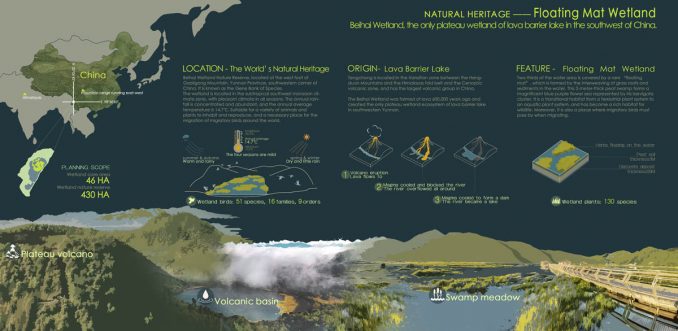
Beihai Wetland Nature Reserve has a planned area of 4,300,000 m2 and a wetland area of 460,000 m2. Two-thirds of the water area is covered by a rare “floating mat”, which is formed by the interweaving of grass roots and sediments in the water. This 2-meter-thick peat swamp forms a magnificent blue-purple flower sea represented by iris laevigata cluster. It is a transitional habitat from a terrestrial plant system to an aquatic plant system and has become a rich habitat for wildlife. Moreover, it is also a place where migratory birds must pass by when migrating.
The landscape planning team and ecological research team adopted various methods including aerial photos, on-site survey, questionnaire survey, and GIS analysis to investigate on the biodiversity of the wetland. Moreover, the on-site survey combined with multiple evaluation records in the past 50 years provides a long-term dynamic analysis.
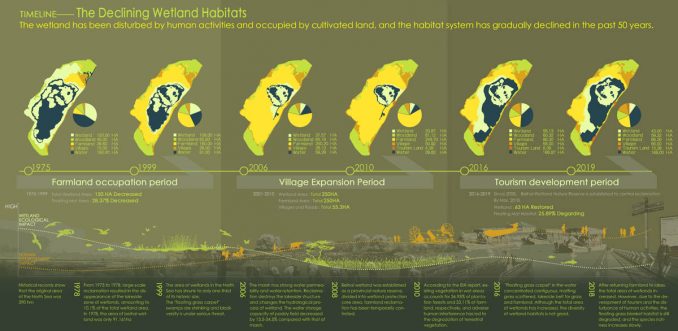
In the past 50 years, the wetland has been disturbed by human activities and occupied by cultivated land, leading to the gradual decline in habitat.
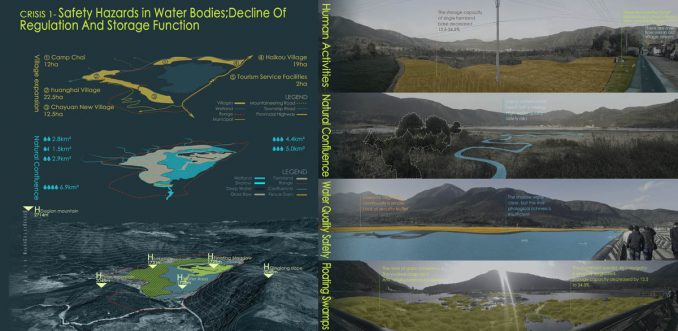
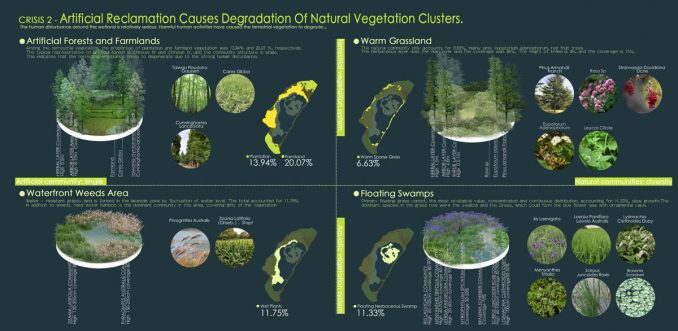
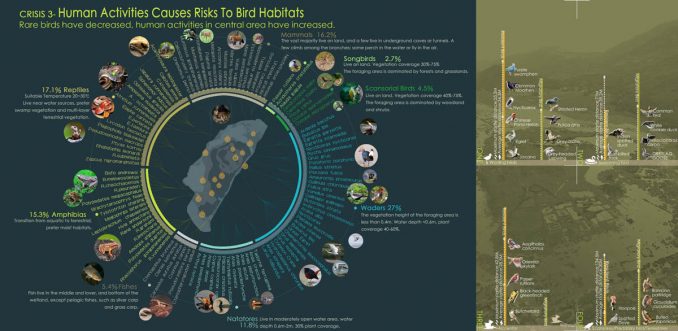
“Health Circle” Design Strategy & Resilient Boundary Plan
The proposal builds a series of ring structures to explore how to balance the relationship between different species in boundaries of different habitats. The triple “Health Circle” evolves successively to form a resilient circle structure and promote boundaries to be wild and restore itself with a long-term restoration plan.
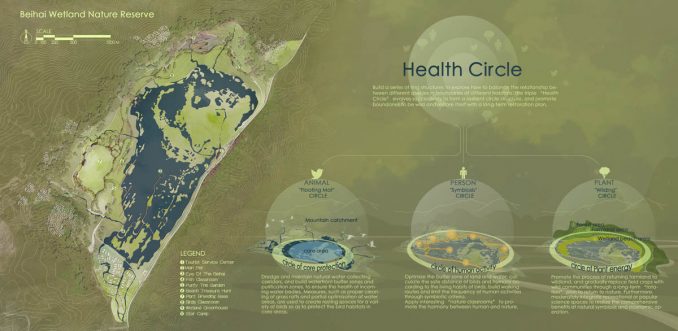
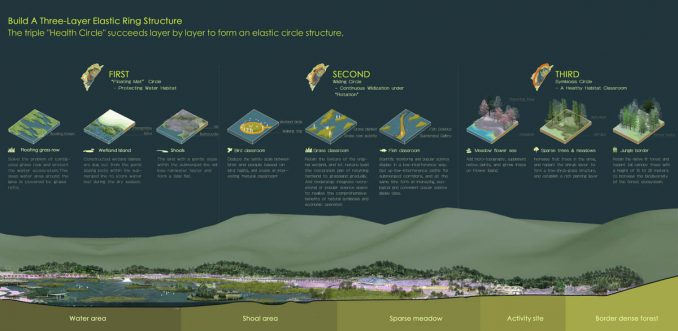
1. “Floating Mat” Circle – Protecting Water Habitat
By dredging and maintaining the natural water-collecting corridors, as well as building waterfront buffer zones and purification zones, the proposal ensures the health of incoming water bodies. Measures such as proper cleaning of grass rafts and partial optimization of water areas, are used to create resting spaces for a variety of birds and further protect the bird habitats in core areas.
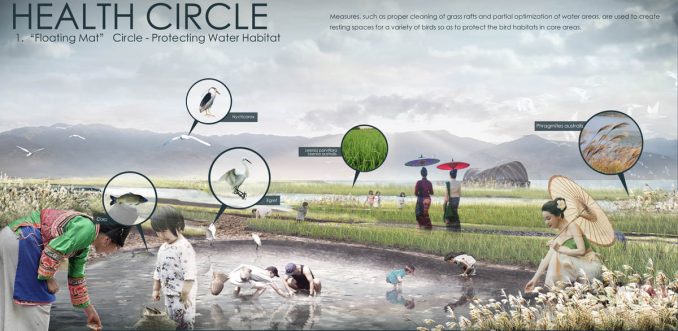
2. Symbiosis Circle – A Healthy Habitat Classroom
The proposal optimises the buffer zone of land and water, calculates the safe distance of birds and humans according to the living habits of birds, builds walking routes and limits human activities frequency through symbiotic criteria. It also applies interesting “nature classrooms” to promote the harmony between human and nature.
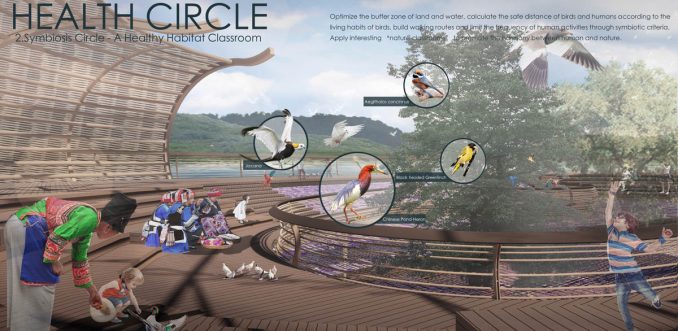
3. Wilding Circle – Continuous Wildization under “Rotation”
The proposal promotes the process of returning farmland to wildland, and gradually replacing field crops with wild communities through a long-term “rotation” plan. Furthermore, it moderately integrates recreational or popular science spaces to enhance the understanding of benefits of natural symbiosis and economic operation.
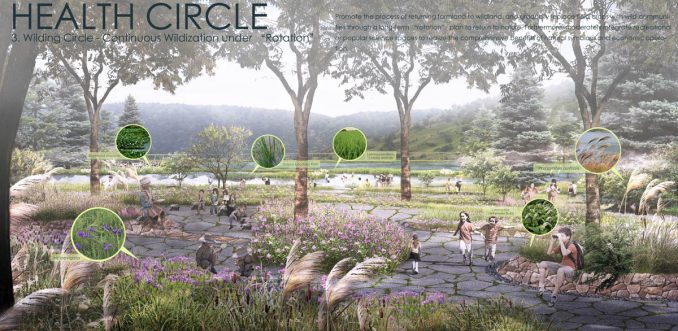
Health Circle: Strategies for Habitat Restoration and Landscape Planning of Beihai Wetland Nature Reserve
Landscape Design: Guangzhou S.P.I Design Co., LTD
Design Team: Hu Sun, Yanjun Chen, Yiding Wu, Di Liu, Fei Huang, Lingyue Wang, Jingyue Feng, Tianhua Liu, Xiaoyue Wang, Yunyang Shi
Client: Baoneng Real Estate Co., Ltd., Tengchong Beihai Wetland Ecotourism Investment Co., Ltd.
Image Credits: Guangzhou S.P.I Design
Guangzhou S.P.I is a WLA Sponsor
